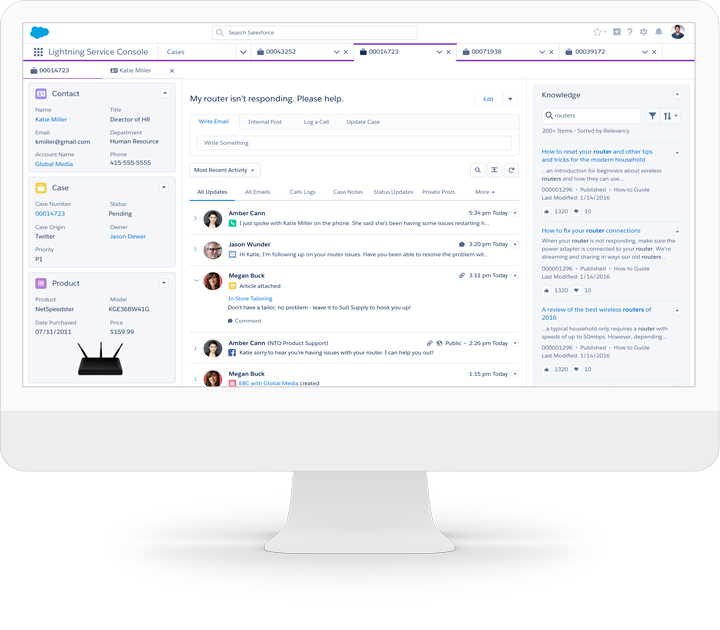How Do You Measure the Performance of Your Call Center
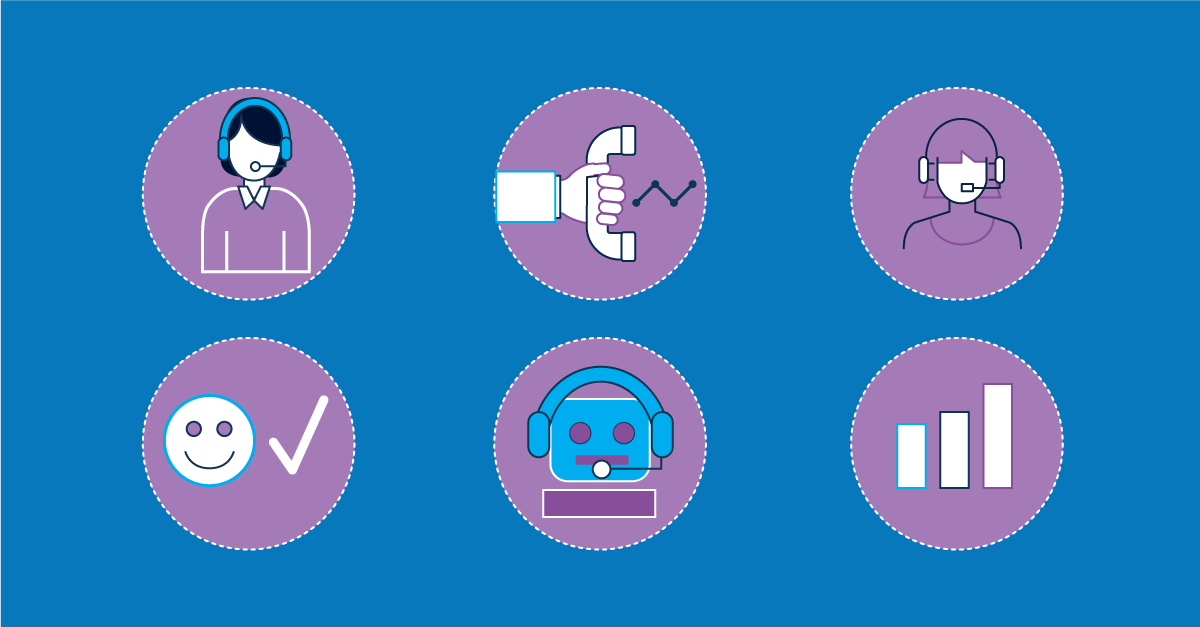
By Amanda DiSilvestro
Your call center is one of the main channels where your customers can interact with your company, so its performance matters a lot. Good customer service over the phone can win you loyal customers and word-of-mouth recommendations. Poor service, on the other hand, may turn people away and weaken your reputation.
If you’re not sure how well your call center is performing, there’s no need to guess. By tracking a few key metrics, you can get an objective idea, and over time, you’ll be able to measure your call center’s improvement.
Here’s what you need to know about tracking KPIs for your call center.
Your Call Center Metrics Matter
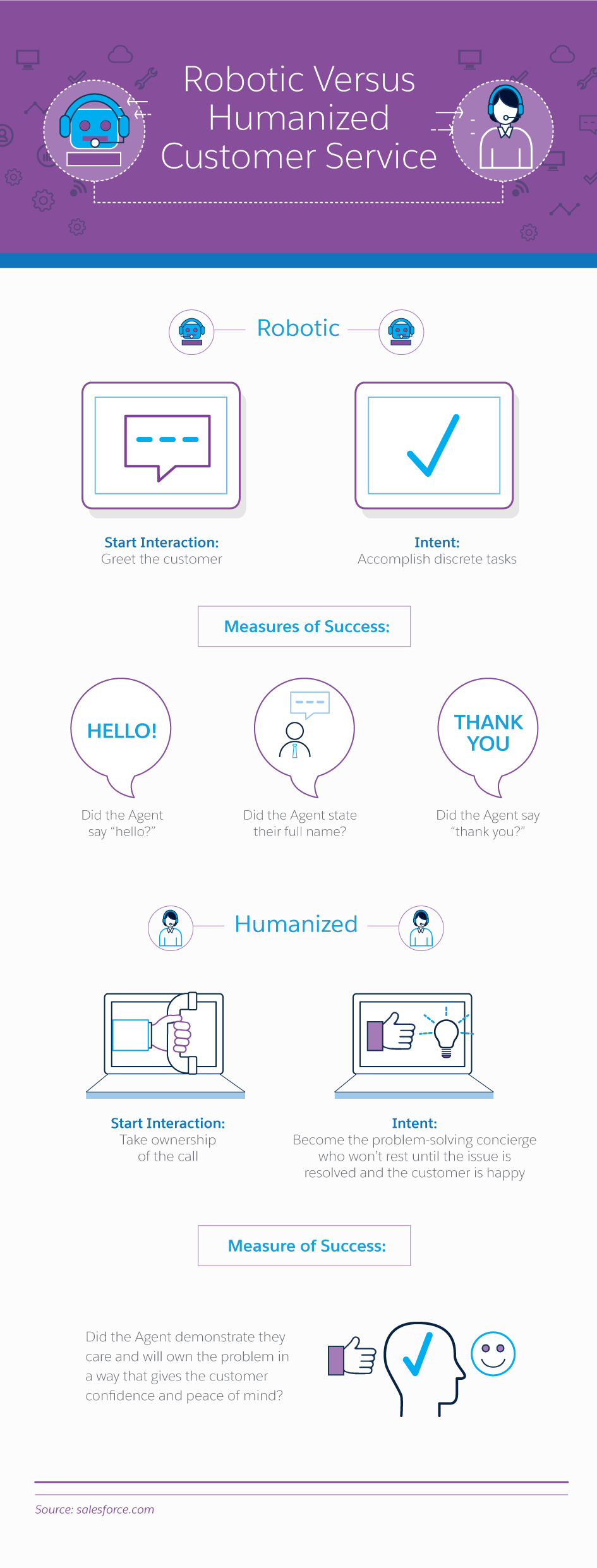
However, tracking and acting on your call center metrics doesn’t just improve your relationships with your customers. It can also help you keep your company running smoothly. It’s often easier to make complex decisions when you’re armed with data about what works and what doesn’t. In addition, tracking your KPIs helps you optimise your employees’ performance and preemptively address any problems.
There are a number of different metrics you can track, but a handful are especially important. Most can be divided into two groups: practical metrics and quality metrics. These aren’t hard-and-fast categories, as there’s some overlap. In general, though, practical metrics can be measured in quantitative terms such as minutes per call, while quality metrics have to do with how well your agents respond to customer needs.
Here are some of the metrics you should be tracking from each group.
Practical Metrics
If you like numbers and hard data, you’ll love sifting through your call center’s practical metrics. Use your automatic call distribution system to capture this information.
Time
Time-based metrics are some of the easiest to track. There are you should keep an eye on:
The average time it takes for an agent to answer a call. The more quickly a customer can get through to an agent, the better.
The average amount of time a customer spends on hold. If a customer has to hold for too long, they may get frustrated and hang up, which increases your call abandonment rate. If your average hold time is low or nonexistent, however, it could mean you have too many agents working at the same time.
The average call handling time (or, in other words, the average length of each call). Individual call lengths won’t tell you very much, since some customers have more complicated problems than others. But looking at your call center’s average call handling time over a day or a week can give you an idea of how efficiently your agents and teams are helping customers.
Time-related metrics can tell you a lot, but don’t get too wrapped up in them. Good customer service is ultimately more important than finishing calls as quickly as possible. Keep the bigger picture in mind as you track these metrics.
Calls Blocked
This is a measure of how many people can’t get through to an agent when they try to contact your company. Try to keep your percentage of blocked calls as low as possible. No one likes to get a busy tone when they’re trying to call customer service.
Call Abandonment Rate
This is a measure of how many callers hang up before talking to an agent. A high call abandonment rate is bad news: It means callers are getting frustrated and giving up before you have a chance to fix their problem. High call abandonment correlates with low customer satisfaction.
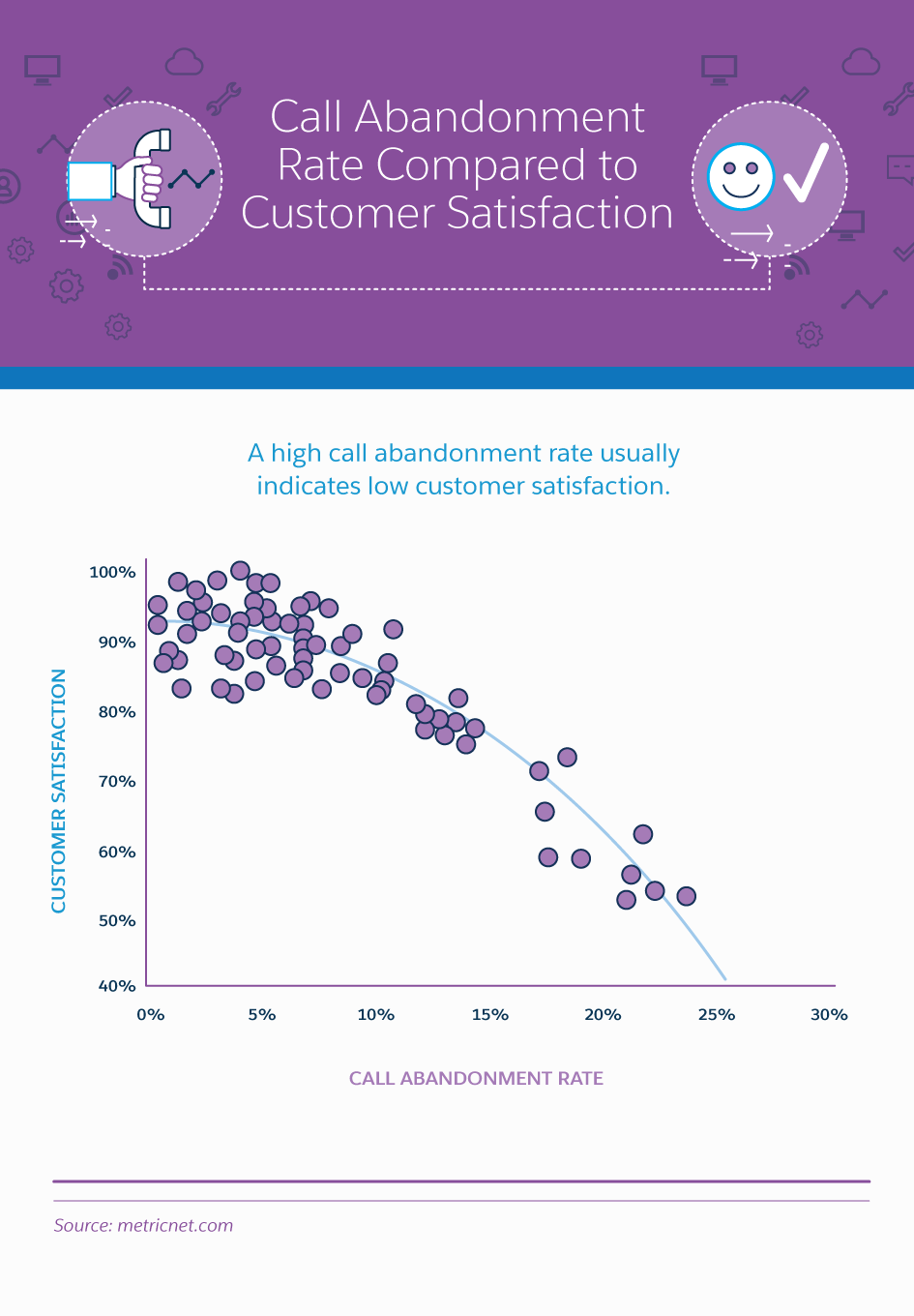
If you have a high call abandonment rate, it could mean you need to simplify your interactive voice response (IVR) tree or reduce your average holding time.
First Contact Resolution (FCR)
How many of your callers are able to resolve their issues during their first call? A high FCR usually points to high customer satisfaction. If you have a low FCR, it may mean your agents need more training or that you need to route incoming calls differently.
Transferred Calls
It’s fine, and sometimes necessary, to transfer some calls, but if your call center agents have to do it often, you’re not operating as efficiently as you could be. Look into adjusting your call routing system so callers are connected with the right agent or department on their first try.
Quality Metrics
Quality metrics involve the less tangible aspects of your call center. How patient and empathetic are your agents? How do customers feel after getting off the phone with them? These metrics aren’t as easy to measure as the more practical issues above, but they’re just as important. Many companies either have their own quality department or hire an external quality control team to help track these metrics.
Agent Courtesy and Professionalism
This metric has to do with how polite and pleasant your agents are. Since your agents represent your company, it’s important they treat customers with the same professionalism over the phone as they would in person.
Agent Knowledge
Your agents should be able to answer customers’ questions quickly and accurately. Do your customers feel like they can trust your agents to provide the information they need? If newer agents struggle to answer questions or explain things, you may need to route tricky calls to more experienced agents and invest in more employee training.
Adherence to Guidelines
This metric tracks how well your agents follow a script and observe other protocols. If you want your agents to greet callers a certain way, for instance, that would be included in this metric.
Agent Turnover Rate
Your call center’s turnover rate can have a big impact on the kind of customer service you offer. The more experienced your agents, the better they will be able to answer questions, calm callers, and solve problems.
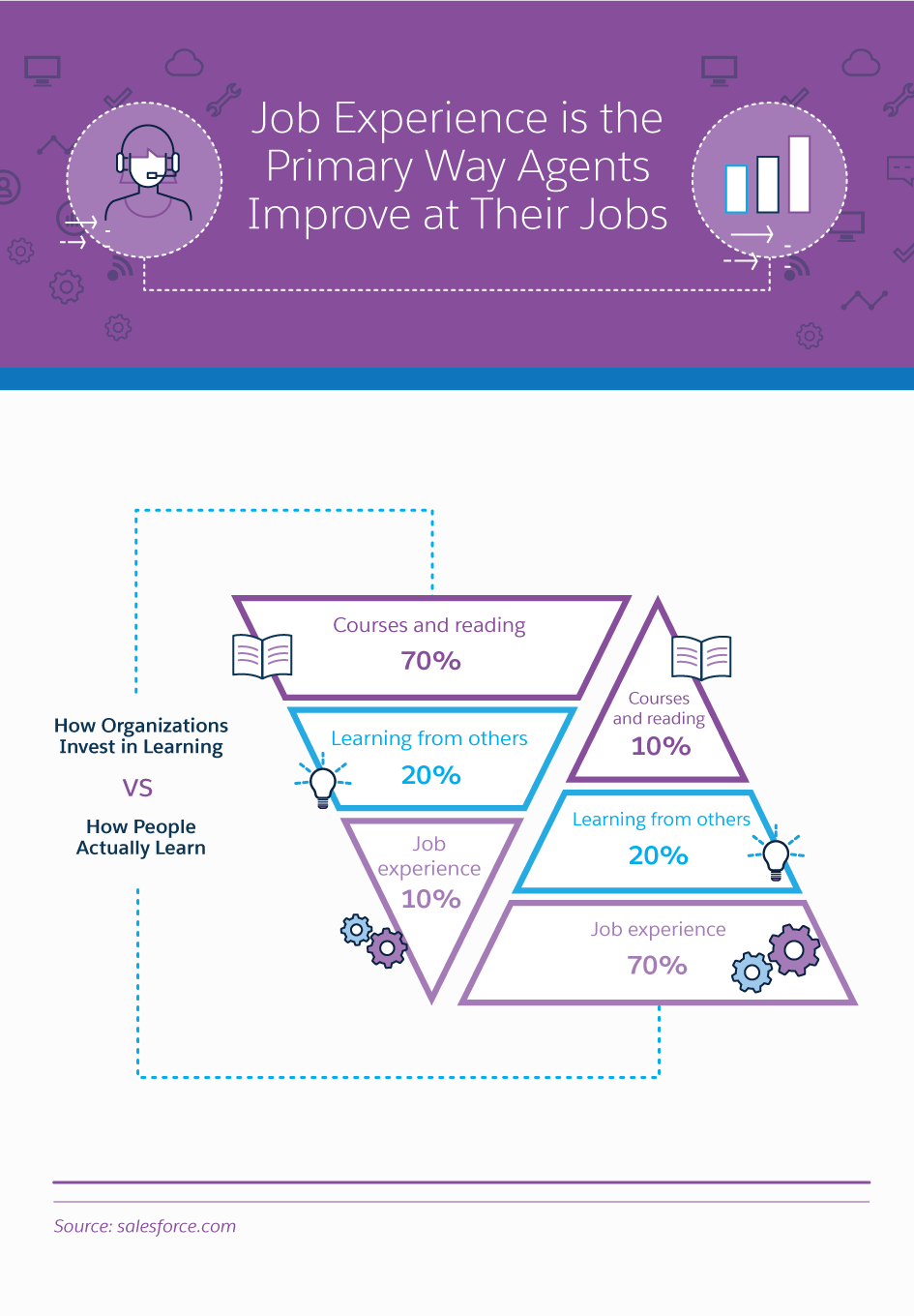
Your agents will also do better work if they’re satisfied with their jobs. If your call center has a high turnover rate, find out what you can do to improve retention and make sure your employees feel appreciated.
Customer Satisfaction (CSAT)
Customer satisfaction (or CSAT) is the most important metric of all. Unfortunately, it’s also the most nebulous. How can you measure your customers’ feelings about their interactions with you?
The simplest way to gather this information is through CSAT surveys. These surveys should be sent to customers immediately after their call, while the experience is still fresh in their mind. Email is one good way to survey customers, but you can also send SMS surveys or even contact customers on social media. Keep your survey short; the quicker and easier it is to complete, the more feedback you’ll get.
Quality Metrics
Now you have an idea which metrics you should be tracking. But if your numbers aren’t where you want them to be, what can you do to improve them? Goal setting, teamwork, and frequent check-ins are key. Here’s how you can create a pattern of constant improvement at your call center.
- Define specific goals. Get concrete about what you want to achieve. For instance, don’t just decide you want to improve your first contact resolution rate. Set a goal to resolve 75 percent of your customer service calls on the first try.
- Create a step-by-step plan. Decide how you’ll make your goal a reality. For instance, you may want to schedule additional training sessions with your employees, change some of your internal practices, or try introducing a new method of communication, such as live chat.
- Find the right tools. The tools you use make a big difference in your results. Consider trying new software, hiring a quality monitoring firm, or updating your customer satisfaction surveys.
- Get your team on board. Hold a meeting with your whole team to discuss your goals. See if anyone has suggestions to improve your plan.
- Keep your agents motivated. Your agents are the heart of your call center, and you need their cooperation to make positive changes. Look for ways to keep employee morale high, and hold regular meetings to update them on the improvements they’re helping to create.
- Check your KPIs regularly. You’ll need to stay on top of your KPIs to make sure your changes are actually helping your call center. Check your metrics on at least a weekly basis.
- Revise your plan when necessary. As time goes by, you’ll need to adjust your methods and set new goals. Don’t be afraid to change things if you think it will help your call center’s overall performance.
The Takeaway

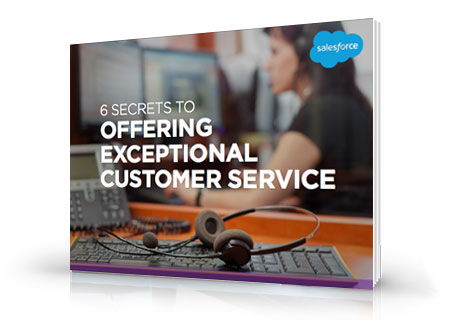
Secrets to offering exceptional customer service.
